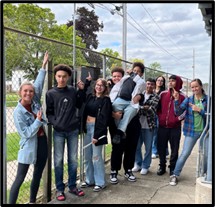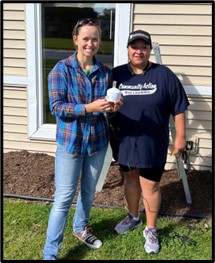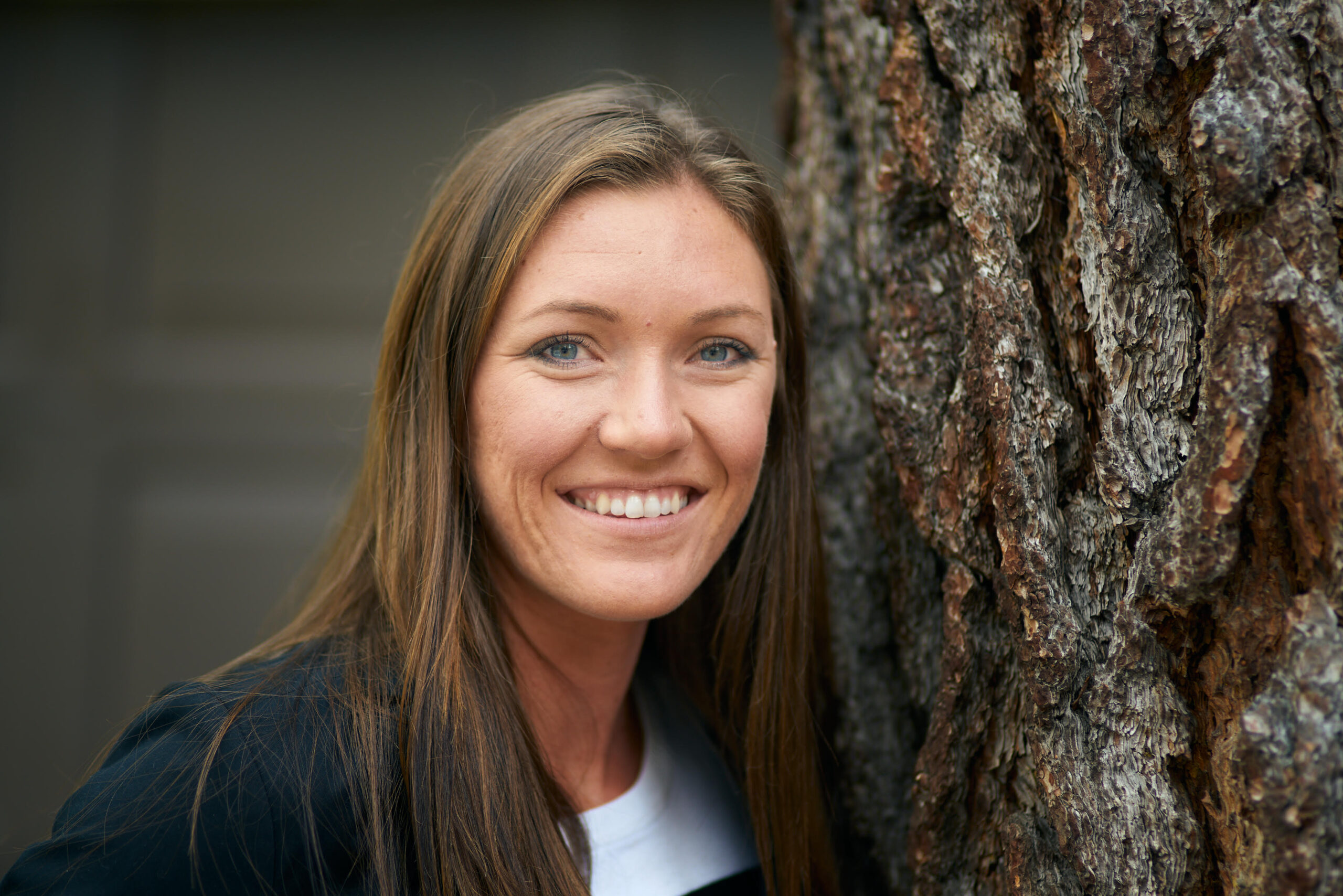Apply now to join our next cohort of Community Science Fellows and Community Leads!

Image by Tom from Pixabay
This project aims to support the City of Beloit community in assessing local air quality within vulnerable communities. With low-cost, PurpleAir monitors loaned from the EPA, we are measuring particulate matter air quality in six locations within Beloit, a city situated southeast of a recently expanded gas-fueled power plant. With sensor host partnerships including local government, community services, schools, and neighborhoods we aim to not only monitor air quality, but also to engage, co- educate, and empower local community members to understand the health risks and to serve as an advocate for providing resources that mitigate poor air quality. We are engaged with an AP Environmental Science class, helping with data acquisition, and hope to engage in local ‘town-hall style’ forums in the future. Finally, we plan to draft any results and share them, to emphasize the need for us to protect the Beloit community residents.
Our first progress point came from a Purple Air sensor loan from EPA for 6 months of (potential) data collection. We were able to deploy 4 sensors for between 4-6 months of data collection and have continued data collection efforts at 2 of the sites, and added a third, with continuity. We were able to purchase our permanent sensors after being invited to participate in a workshop series designed to give NASA scientists a better understanding of the data needs of communities in order to broaden the use of NASA-collected data. With the data we collected from the EPA sensor loan, we connected with Dr. Crispin Pierce’s Lab at UW Eau Claire and his students: Alexis Boehm, Stevie Harper took a first look at some of the air quality data collected and contextualized potential issues with natural gas emissions. Additionally, our data collection efforts were used in IQ Air’s annual air quality report for 2023, recognizing that Beloit’s air quality in 2023 did not meet the health standard recommendations. The company that published the report funded an additional sensor for the area that additionally measures CO2 concentrations. As a follow up to this work, our community leads have continued to connect with decision makers and community members through an air quality coalition group that recently formed. The aim of this group is to acquire a higher quality air quality monitor that includes more sensors than particulates. We have also continued conversations with the WI DNR to understand the process between data collection and management action. Finally, our group is planning to submit an abstract to Midwest Political Science Association Conference and share our project as a case study for starting local air monitoring programs.
Methodology:
Deliverables:
Air Quality and Environmental Justice Concerns in Beloit, WI Report (link pending)
Relevant News Articles:
Project changes:
We initially were planning to draft a report based on the analysis of air quality data and present the report to the WI DNR. We decided instead to engage them in more conversation about criteria necessary for management action and change and rework our analysis plan based on those criteria. We learned that datasets need to have 3 years of air quality data in order to look at average trends vs. health standards. We will continue to work with the DNR on data analysis efforts as air quality monitoring continues in Beloit. The coalition will also continue to engage with the community and to advocate for better air quality monitoring at the federal (EPA) level, which sets the boundaries for what WI can do. The coalition is actively discussing partnerships with other community groups and advocates from other cities in WI to propose larger monitoring network ideas. They are seeking additional participation as a coalition member! If you are interested, contact Brittany Keyes: brittany@healthyclimatewi.org.


Reflections:
What are 2-3 things that contributed to your success?
In the beginning it was having monthly meetings with my other cohort mates. We were all based in WI and so our networks came in handy, in addition to the diversity of perspectives on how to handle issues. I also think establishing what roles individuals have on the team up front can be useful for goal setting later on. Finally, keeping an open and positive dialogue with the community leads led to some creative ideas.
What would you do differently if you were to do it again?
I do not think I would change anything about the project. We are at a suitable place visibly in the community along with decision makers and have future action happening from new coalitions. I think it would have been ideal to complete our deployments coordinated and at all locations without hitches, however, these turned out to be less important for future goals of the coalition.
What lessons can you share that would be helpful for others who may be embarking on a similar project journey?
Reach out to previous projects that have worked on something similar when it comes to air quality monitoring. There are so many groups that have been advocating for small communities and providing templates for action in order for communities to advocate for themselves. No need to reinvent the wheel!
Additional resources:
Over the last decade, energy companies in Wisconsin have been shutting down coal power generation plants and replacing a select few with higher-energy generation, combined-natural gas plants. Statewide climate-related goals (Executive Order No. 38) intend to help WI energy companies cut carbon emissions by 80% by 2050 (WI public radio) by transitioning away from coal-burning toward natural gas and renewable energy sources. Although natural gas plants generally reduce carbon dioxide (CO2), sulfur and mercury pollutant emissions, they have other reported environmental and health-related consequences (Fouladi Fard et al 2016). For example, burning natural gas for fuel results in elevated release of methane, which some consider to be a far more potent greenhouse gas than CO2 (Alvarez et al 2012). Additionally, some communities have seen concentration-dependent increases in hospitalizations and daily admissions based on age and proximity to the plant (Di Ciaula et al 2011). Although, in some cases where energy produced did not increase, members of the community saw improvements in long-term asthma outcomes (Casey et al 2020). Nonetheless, experts are calling for deeper considerations into the health and environmental damage in concert with expanded emission control, particularly in cases of plant expansions (Fouladi Fard et al 2016).
However, the damaging effects of gas-fueled power plants are not felt equally across human populations. In fact, locations chosen for energy production disproportionately impact low-income, elder, and predominantly non-white and indigenous communities (EPA). This is the case for the City of Beloit, Wisconsin, a predominantly non-white community that classifies as low-income, relative to the national averages (EPA EJAScreening Tool). The city of Beloit sits just south of Alliant Energy’s West Riverside Energy Center (WERC), a recently converted coal-to-natural gas power plant. Alliant Energy serves more than 960,000 users in WI and IOWA (WI public radio); one of which, WERC, has increased their energy production threefold to meet the demand of powering an additional 550,000 homes to compensate for coal plants being phased out of service. Although these conversion efforts could stem from current Governor Tony Evers’s Executive Order #38 “Relating to Clean Energy in Wisconsin“ (link), which calls for energy consumed in the state of Wisconsin to be carbon free by 2050, there has been minimal to no effort placed in understanding the disproportionate impacts that some communities, like Beloit, may already be facing.
With a small investment of time, we were able to use the EPA Clean Air Market’s (link) data user section, along with embedded data mapping tool, EJSCREEN to compare demographics from communities in close proximity to natural-gas power plants, relative to the national average. The screening and mapping tool aims to highlight places with vulnerable communities or greater environmental burdens. Note, The demographic information is obtained from the U.S. Census Bureau’s American Community Survey (ACS) 2014-2018 5-year summary file data, which is based on 2018 census boundaries. Overall, the number of power plants in communities that fall at or above the 80th percentile nationally, appear to be disproportionately located in key demographic communities such as: low-income, people of color, less than high school education, linguistic isolation, individuals under 5 years and above 64 years of age (Fig 1). Specific to the Beloit area, mapping overlays for socioeconomic indicators demonstrate that the surrounding communities are made up predominantly by communities of color and low income individuals, relative to national percentiles (Figure 2). Indeed, most of the shading in Figure 2 (A) indicates that communities within Beloit often fall above the 60-70th percentiles, with some as high as the 80th percentile. Similarly, in part (B) of Figure 2, orange and red shading (90-95 and 95-100th percentile, respectively) indicates that this area is not only one of the poorest in Wisconsin, but also nationally. The need to protect the community members residing in this area is clear, however, little to no work has been done to investigate the effects of the newly converted power plant. Therefore, we aim to investigate potential harmful particulate materials released from the power plant, and draft a “potential impact report” to the WI DNR. Additionally, we aim to engage, co- educate, and empower local community members to understand the health risks and to serve as an advocate for providing resources that may mitigate poor localized air quality.


To date, there has been minimal effort aimed at investigating the extent to which residents from sensitive populations within Beloit are exposed to elevated levels of airborne particulate matter. The proposed project leads are interested in addressing the following questions:
Air Quality Sensors: We have been approved to borrow 6 PurpleAir PA-II air quality sensors by the EPA Region 5 Air Sensor Loan Program (link) for 6 months (with a possibility to extend).
Sensor Hosts: We have located sensor host partners in multiple organizations that are utilized by members of vulnerable communities. Since September, we have installed and/or registered purple air sensors at the following locations:

Installation with the AP Environmental Science class from Beloit Memorial High School. Photo by Alisha Saley.

Community Lead, Brittany (L) meets with Angelina Reyes (R) from Merrill Community Center to install a sensor. Photo by Alisha Saley.
If you are interested in checking out the data that is being collected so far, you can find it live at: Real-Time Air Quality Map, Beloit WI.

Dr. Brittany Keyes, Local Politician, Former Beloit City Council Vice President
Dr. Brittany Keyes is a physical therapist who lives in Beloit, WI with her husband and two young children. She recently served as the Vice President of Beloit’s City Council where she became aware of the impacts of pollution on the more vulnerable members of her community. She is dedicated to service, volunteering on the board for the Rotary Club of Beloit and the board for Wisconsin Health Professionals for Climate Action.

Dr. Pablo Toral, Professor of Environmental Studies and International Relations, conducts research on sustainable development, with a focus on community-level environmental activism.
Pablo lives in Beloit, where he has been an advocate for initiatives that promote sustainability. He works with several community organizations and currently serves in the City of Beloit’s Plan Commission.

Abby Novinska-Lois, Executive Director of Wisconsin Professionals for Climate Action
Abby received her bachelor’s degree in Environmental Science (cert. in Environmental Studies) from the UW- Madison and is currently pursuing a Masters in Public Health. She has worked across various scales of climate and environmental justice and currently splits her time between the Global Health Institute and the Wisconsin Health Professionals for Climate Action (WHPCA), where she is the executive director. After some local health professionals alerted WHPCA to potential air quality issues in Beloit, she reached out to Thriving Earth Exchange and submitted a project for the April 2022 cohort.
We are partnering with the Air Monitoring team at the Wisconsin Department of Natural Resources to aid in data calibration along with an outside air quality scientist (finalizing) for results interpretation and dissemination products.

Alisha Saley, PhD Candidate in the Ecology Graduate Group, UC- Davis
Alisha (she|her) is a marine ecology PhD candidate at the University of California-Davis (Bodega Marine Laboratory). From Wisconsin, she received her undergraduate education from the UW- La Crosse. She is broadly interested in how co-learning and capacity building strategies can strengthen the impact of research effort. Joining the team as a project manager allows her to continue to move science beyond the walls of academia, outside of her field of study.
 This community is part of the Educational Partnerships for Innovation in Communities – Network (EPIC-N), which unites the human capital of universities with local governments and communities to improve the quality of life and social wealth for all involved. Visit their website to learn more https://www.epicn.org/
This community is part of the Educational Partnerships for Innovation in Communities – Network (EPIC-N), which unites the human capital of universities with local governments and communities to improve the quality of life and social wealth for all involved. Visit their website to learn more https://www.epicn.org/
(c) 2025 Thriving Earth Exchange